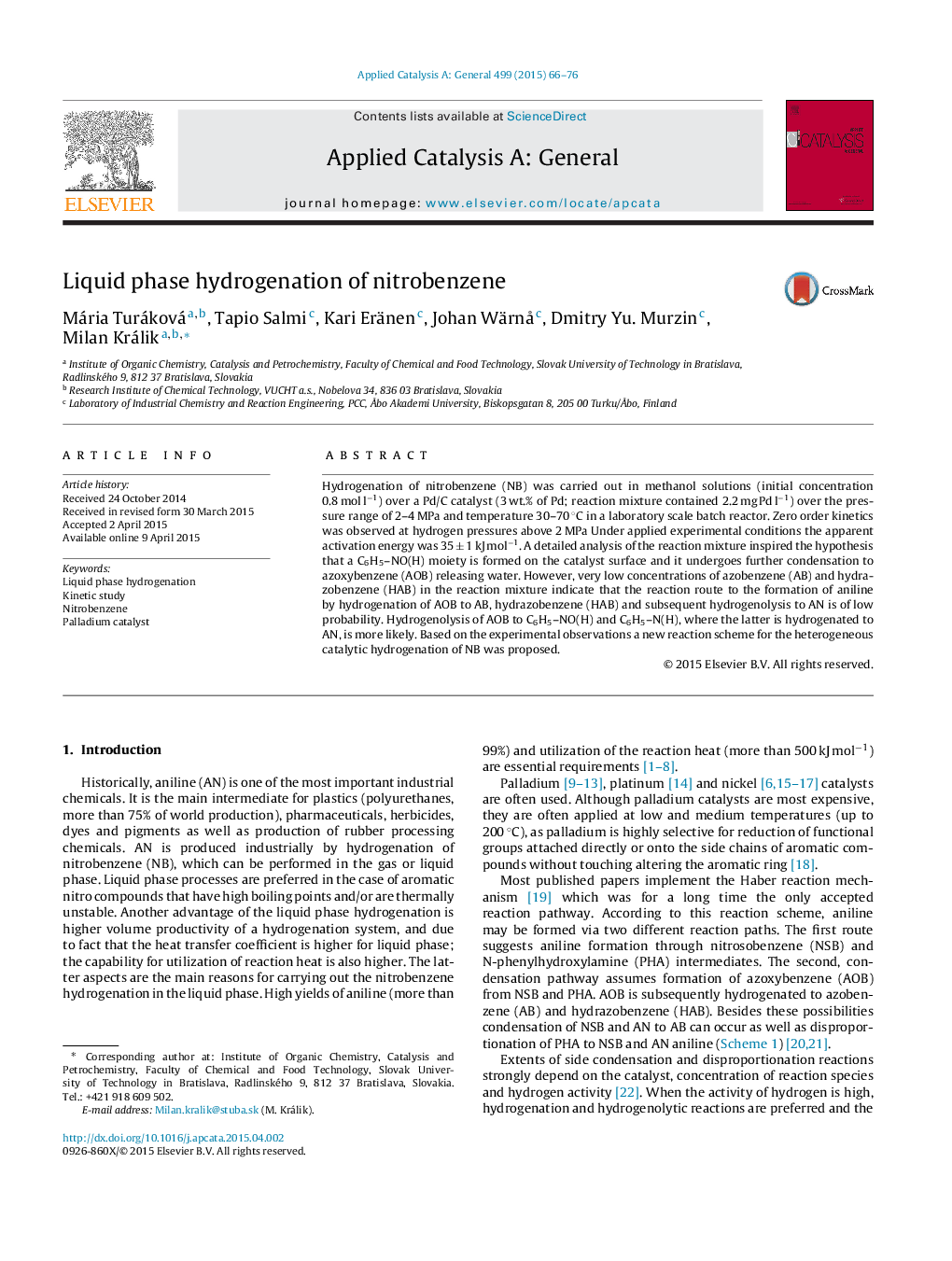| Article ID | Journal | Published Year | Pages | File Type |
|---|---|---|---|---|
| 39187 | Applied Catalysis A: General | 2015 | 11 Pages |
•Pd/C catalyst was tested in liquid phase hydrogenation of nitrobenzene in methanol.•Detailed analysis of the reaction mixture was performed using RP-HPLC.•Kinetic regime was attained at 30–70 °C temperature and 2–4 MPa pressure range.•Nitrobenzene attack by hydrogen is the rate determining step.•A complex reaction mechanism involving the intermediate PhNOH has been suggested.
Hydrogenation of nitrobenzene (NB) was carried out in methanol solutions (initial concentration 0.8 mol l−1) over a Pd/C catalyst (3 wt.% of Pd; reaction mixture contained 2.2 mg Pd l−1) over the pressure range of 2–4 MPa and temperature 30–70 °C in a laboratory scale batch reactor. Zero order kinetics was observed at hydrogen pressures above 2 MPa Under applied experimental conditions the apparent activation energy was 35 ± 1 kJ mol−1. A detailed analysis of the reaction mixture inspired the hypothesis that a C6H5–NO(H) moiety is formed on the catalyst surface and it undergoes further condensation to azoxybenzene (AOB) releasing water. However, very low concentrations of azobenzene (AB) and hydrazobenzene (HAB) in the reaction mixture indicate that the reaction route to the formation of aniline by hydrogenation of AOB to AB, hydrazobenzene (HAB) and subsequent hydrogenolysis to AN is of low probability. Hydrogenolysis of AOB to C6H5–NO(H) and C6H5–N(H), where the latter is hydrogenated to AN, is more likely. Based on the experimental observations a new reaction scheme for the heterogeneous catalytic hydrogenation of NB was proposed.
Graphical abstractFigure optionsDownload full-size imageDownload high-quality image (88 K)Download as PowerPoint slide
